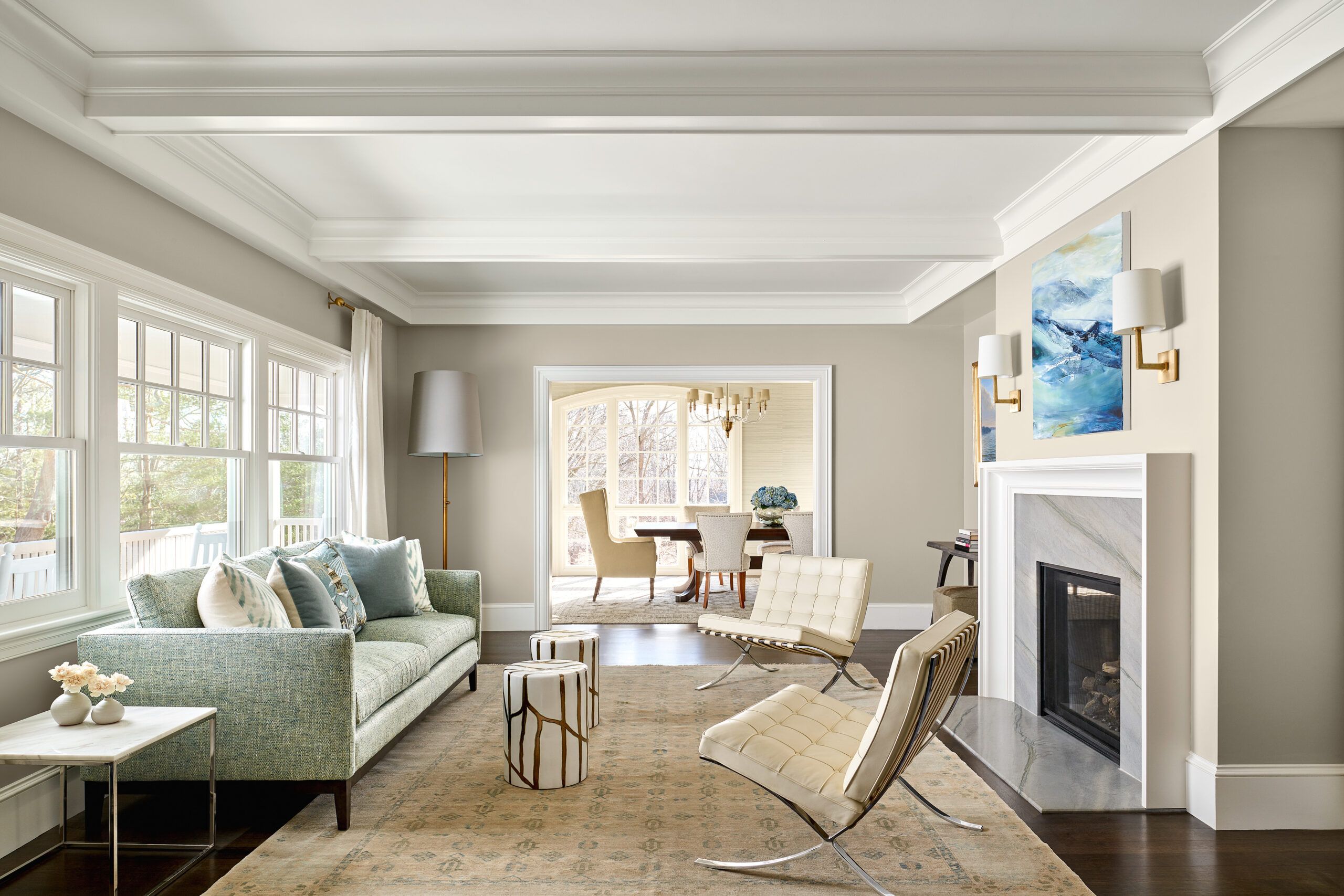It’s hard to imagine that something as simple as trim running along the top of a room can make a huge difference in home decor, but it does. Crown molding is an architectural feature that runs horizontally throughout the top of a room where the ceiling and the wall meet. This decor often resembles the capital, or top portion, of an ancient Greek column to give a space a refined, finished look.
Though mostly used as a design focal point, crown molding can also be installed for more functional reasons. It can hide paint or wall imperfections or any unevenness between the ceiling and the wall. Best of all, crown molding looks good in just about any room, from bedrooms, dens, and dining rooms to kitchens, bathrooms, and even finished basements. Here are some crown molding ideas and ways to incorporate it into your decor.
Popular Crown Molding Designs
If you want to spruce up a room with crown molding, start by getting some inspiration from these different crown molding styles.
Classic white
There’s a reason white is the most common style in homes—it always looks elegant and is incredibly versatile. You can create this look using painted wood or most other crown molding materials.
Bold color
Make your crown molding stand out by painting it a contrasting hue from your walls and ceiling. It doesn’t have to be a bright color (although that could be fun), even a soft muted shade like sage green can look striking. Colorful molding is also the perfect complement to wallpaper.
Dramatic black
Black may seem extreme, but in small doses, like with crown molding, it brings an unexpected pop of sophistication to a mostly white or neutral room.
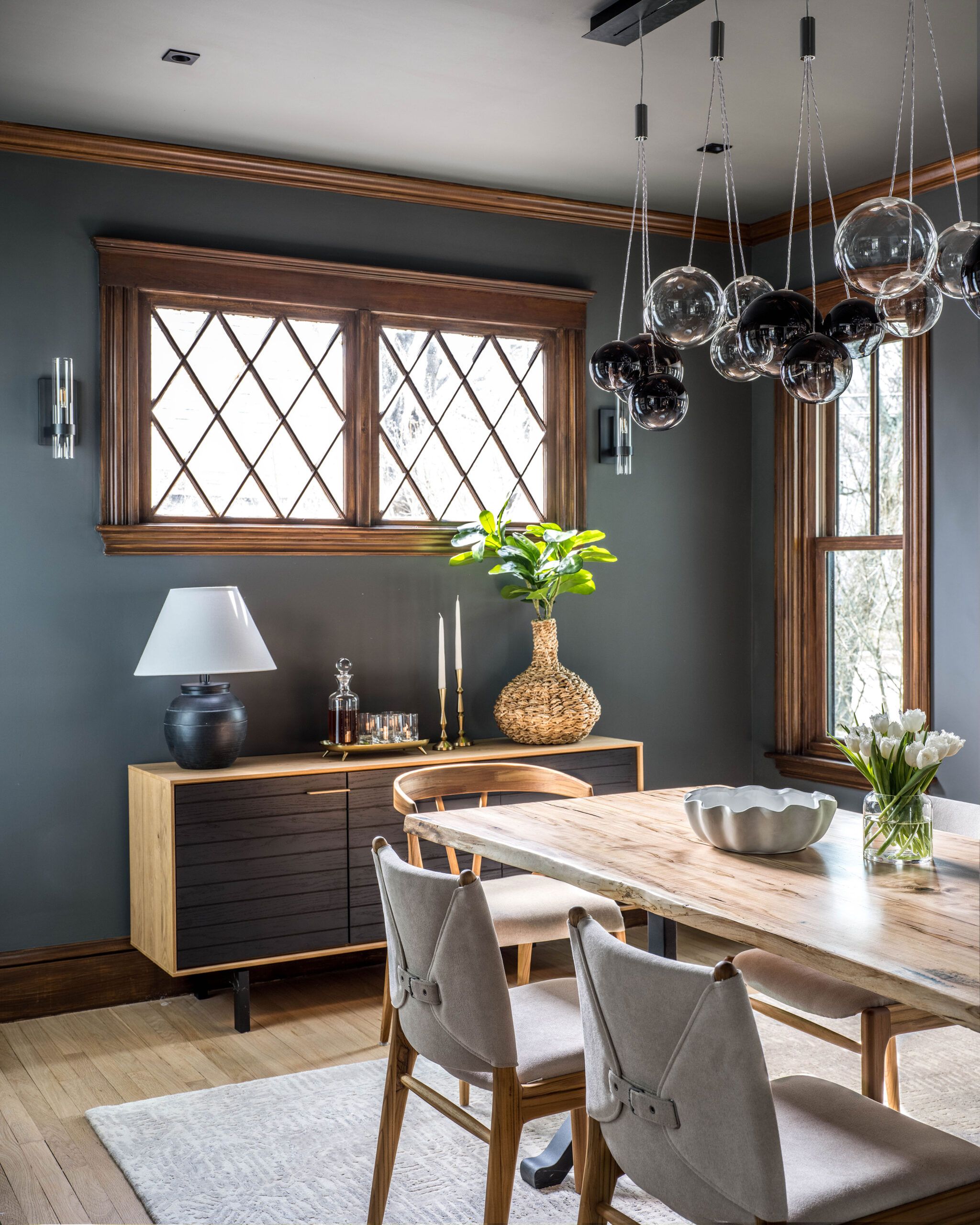
Wood finish
Crown molding in stained wood offers a rustic touch that instantly warms up a space. Simple and unadorned molding works for a more casual, relaxed look, while a more typical crown molding design in a wood finish will give that English countryside vibe.
Shadow effect
For a subtler take on all-black molding, paint just the top edge of the crown molding black to outline the perimeter of the space, creating a cool shadow effect. Think of it as eyeliner for your room!
Big and chunky
It’s OK to abandon the size rules as they relate to the height of your ceilings and instead opt for crown molding as oversized as you want to make a real statement.
Small but detailed
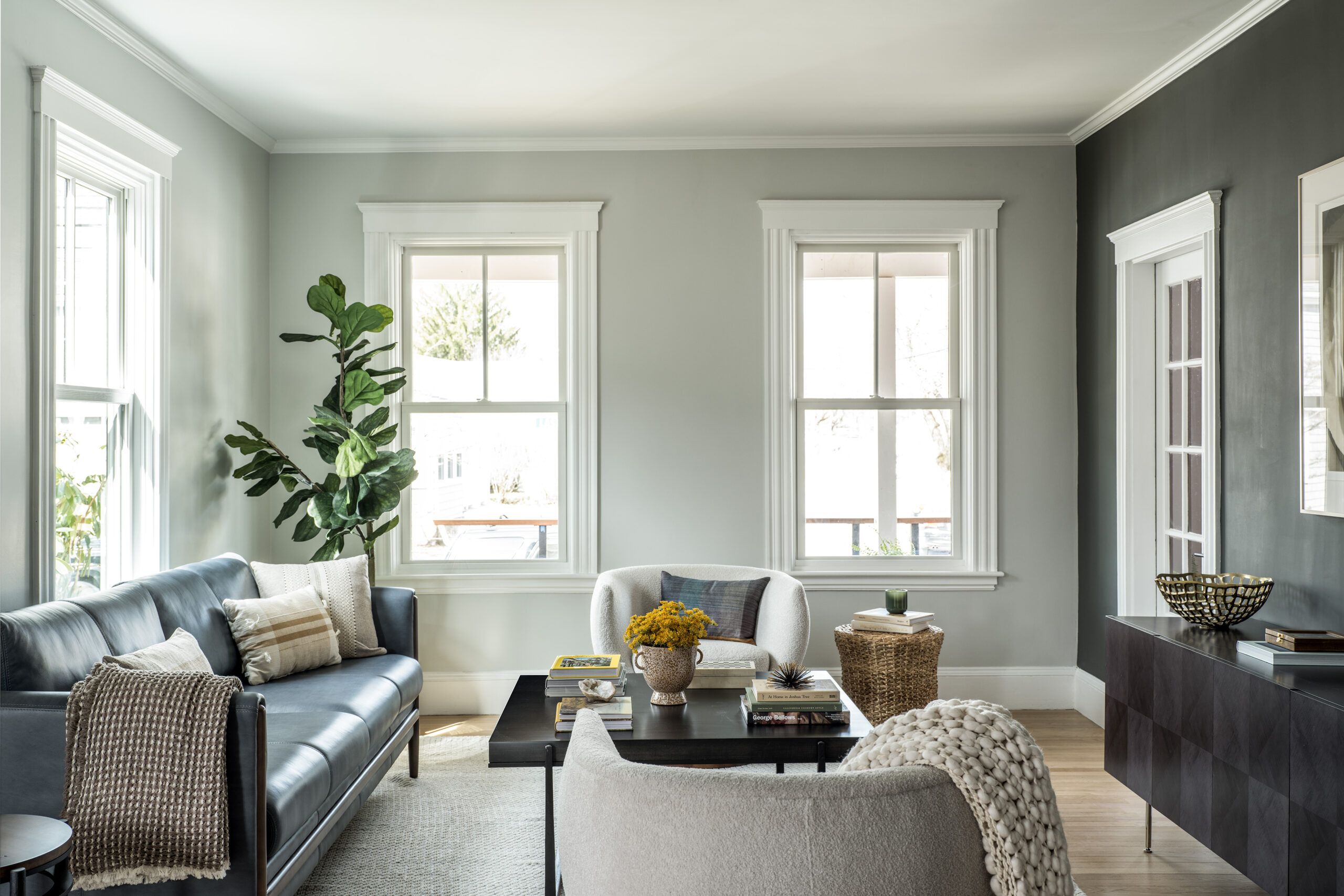
If big is not your thing, you can go in the opposite direction and choose a size smaller than traditional sizes of crown molding for understated polish.
Grandly ornate
Particularly for a formal dining room or living room, an intricately detailed crown molding design is the perfect finishing touch that nicely plays up the other textures in the space.
Stepped up
A graduated step pattern on crown molding feels contemporary and elegant with its clean lines.
Monochromatic texture
When you paint your crown molding the same color as your walls and/or ceiling, you’ll create a enveloping jewel-box effect. You can even go a shade or two darker or lighter for a little more definition.
Sleek and curved
Straight lines and ornate designs may be all the rage, but they aren’t the only style option. If minimalist is more your speed, choose a streamlined concave or convex style for modern crown molding that will completely upgrade your space.
Beam endpoints
If your ceiling has exposed beams, you can add crown molding to give the illusion that the beams have endpoints. Instead of having beams alone, you’ll create what looks like boxes.
Materials Used in Crown Molding
If you want to install crown molding into your home’s decor, there are several different materials available. Labor costs will vary depending on whether you hire a professional installation team or DIY.
Wood
Although it is the most common choice for crown molding, wood is one of the more difficult to install because cutting it is complicated. Installing wood crown molding may be tricky because molding must be cut at specific angles to ensure it fits correctly. Additionally, you may need to paint or stain it before incorporating it into the design. Ideally, wood crown molding should be installed in areas that are typically dry like hallways, bedrooms, and living rooms.
- Materials Cost: $1 to $23 per linear feet
Plaster
If you want to elevate the style of your crown molding, consider installing a plaster-based crown molding. This type of crown molding is slightly more complex than wood to install simply because the materials are heavier. The pieces are also made-to-order, which can be a pretty pricey investment. Despite the challenges with this type of crown molding, it can be one of the most intricate and gorgeous types. Styles may be as simple as traditional layered crown molding or as elaborate as the capital of ancient Greek Corinthian. The best places to install plaster crown molding are in bedrooms or living rooms.
- Materials Cost: $6 to $20
Polyurethane
Another option for crown molding is polyurethane, a type of high-density foam. This form of crown molding is much easier to install than wood and plaster because it is flexible and lightweight. Since this material is highly resistant to mold, moisture, rot, and pests, it is a good option for basements and bathrooms.
- Materials Cost: $2 to $20
PVC
Another type of crown molding is polyvinyl chloride (PVC). Of all the types of crown molding, PVC is the easiest to install. It is usually lightweight, easy to cut, flexible, and quickly hung with adhesives. This material is anti-corrosive and moisture-free, ideal for moisture-rich areas such as basements or bathrooms.
- Materials Cost: $2 to $14
More Ways to Decorate with Crown Molding
Here are some less expected places to consider adding this structural design feature.
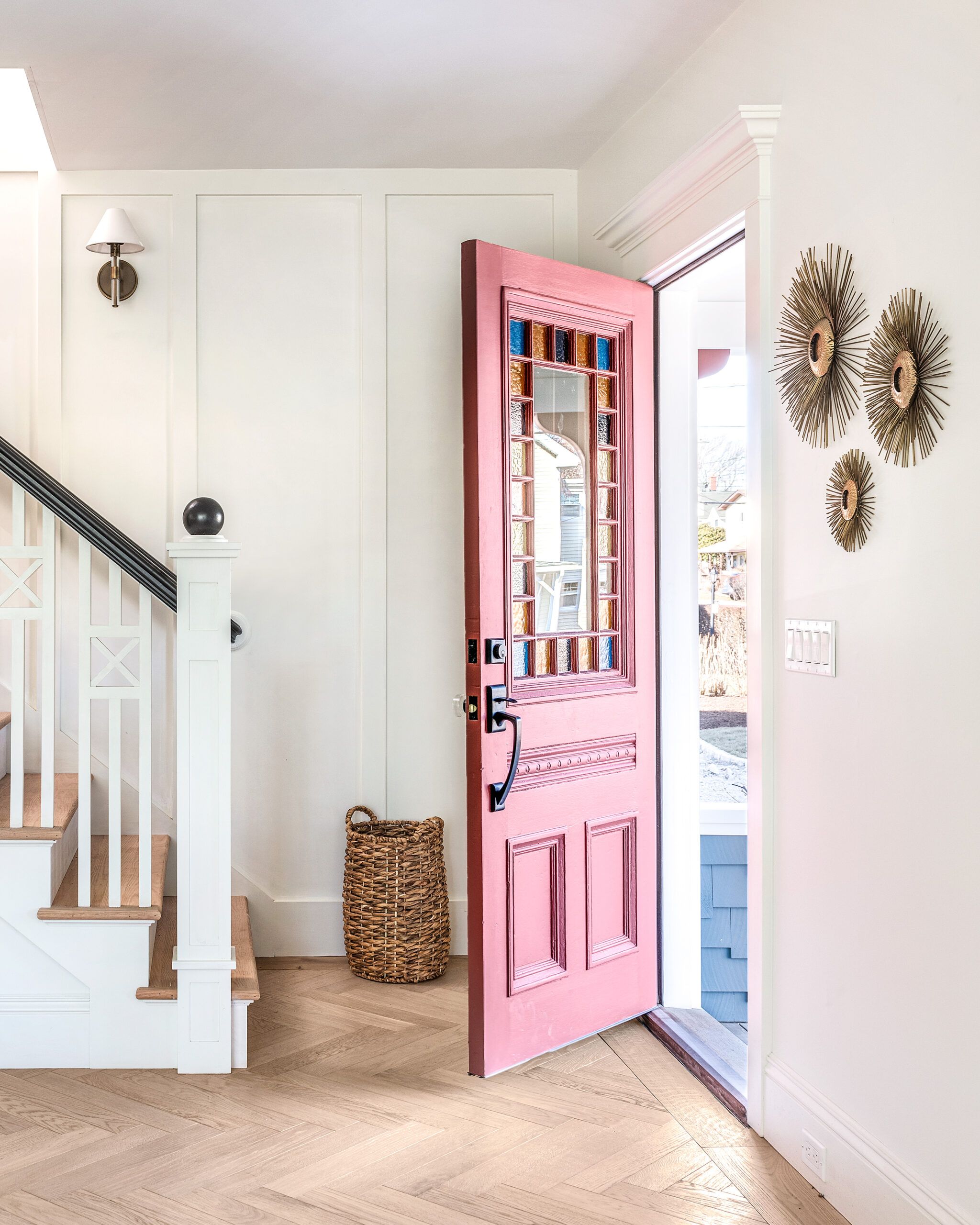
Entryways
Another interesting place to include crown molding is above the interior of the front door. A special design above your door can give your home’s entrance a beautiful ambiance.
Cabinets
Do the cabinets in your kitchen have a void between them and the ceiling? A good option may be to add cabinet crown molding in this area. This will add visual interest, make your space look bigger, and eliminate the gathering spot for dust.
Bedroom headboards
If you’re not excited about the headboards available from furniture stores, revamp an old headboard by attaching crown molding to the top of it.
Bookshelves
If you have tall bookshelves with unused space above them, you can fake the look of built-in bookshelves by installing crown molding above them to meet the ceiling.
Mantles
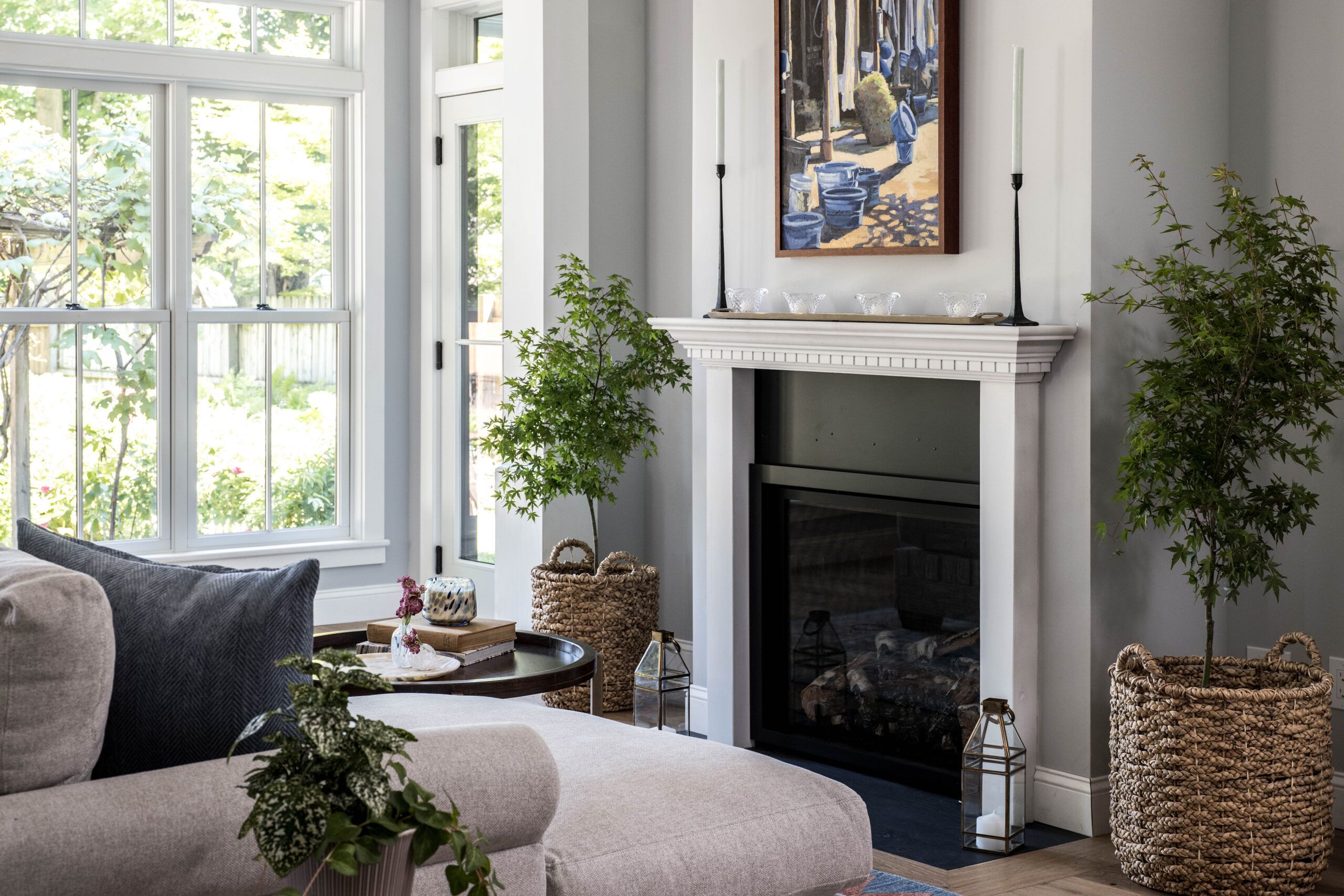
Add crown molding around the mantle of your fireplace. Not only will the fire in the fireplace be eye-catching but so will the gorgeous details of the crown molding.
Advantages and Disadvantages of Crown Molding
Crown molding is a charming addition to just about any room in your home. However, before you put your DIY skills to use or call on a professional, here are a few things you should consider before making crown molding a part of your home’s decor.
Advantages
Here are some reasons why you should get crown molding.
Improves aesthetics
It can make any room look much more beautiful and finished. Installing crown molding forms clean lines that make a great focal point for any room.
Hides irregularities
In some cases, the wall and the ceiling may have imperfections. Perhaps the line where the two meet is chipping or there may be blemishes on the wall. Installing crown molding can camouflage these defects.
Adds depth to high ceilings
To make the high ceilings in your home feel less empty and more elegant, you can add crown molding.
Disadvantages
Here are a few reasons you may not want to install crown molding.
Cost
On average, you can expect to pay between $1 and $23 per linear foot on crown molding installation costs. The entire project could cost, on average, $1,500, which includes the cost of labor and the price of the materials. You may be able to cut the costs by several hundred dollars if you put your DIY skills to use.
Installation

Crown molding can also be challenging to install. Materials may be heavy or fragile and require plenty of care to avoid damaging them while installing. Some materials may require more than one person, which could increase labor expenses.
Maintenance
Dust can accumulate on crown molding in these high-up areas, making cleaning difficult. Not only does regular maintenance of crown molding create a physical challenge with cleaning, but it can also add unnecessary cleaning costs if you need to hire a professional cleaning service.
Frequently Asked Questions
Is crown molding different from crown moulding?
No. The only difference is the spelling, but they are the same thing. Molding is the American English spelling, and moulding is the British English spelling. Whether you see crown molding or crown moulding, it refers to the same trim that you will see aligned at the top of a room.
Is there an ideal size for crown molding?
The crown molding size will depend primarily on the height of your ceilings. For a standard 9-foot ceiling, the crown molding should measure between 3 and 7 1/2 inches.
Can crown molding increase the value of my home?
It depends. If your home is selling in an area where crown molding is in high demand, you may get some return on investment. Ideally, you should seek the assistance of a top-selling real estate agent who can pull the comps for your area and determine if the crown molding is in high demand before investing in this feature. Other home upgrades, such as hardwood floors, may add much more to the bottom line than crown molding.
